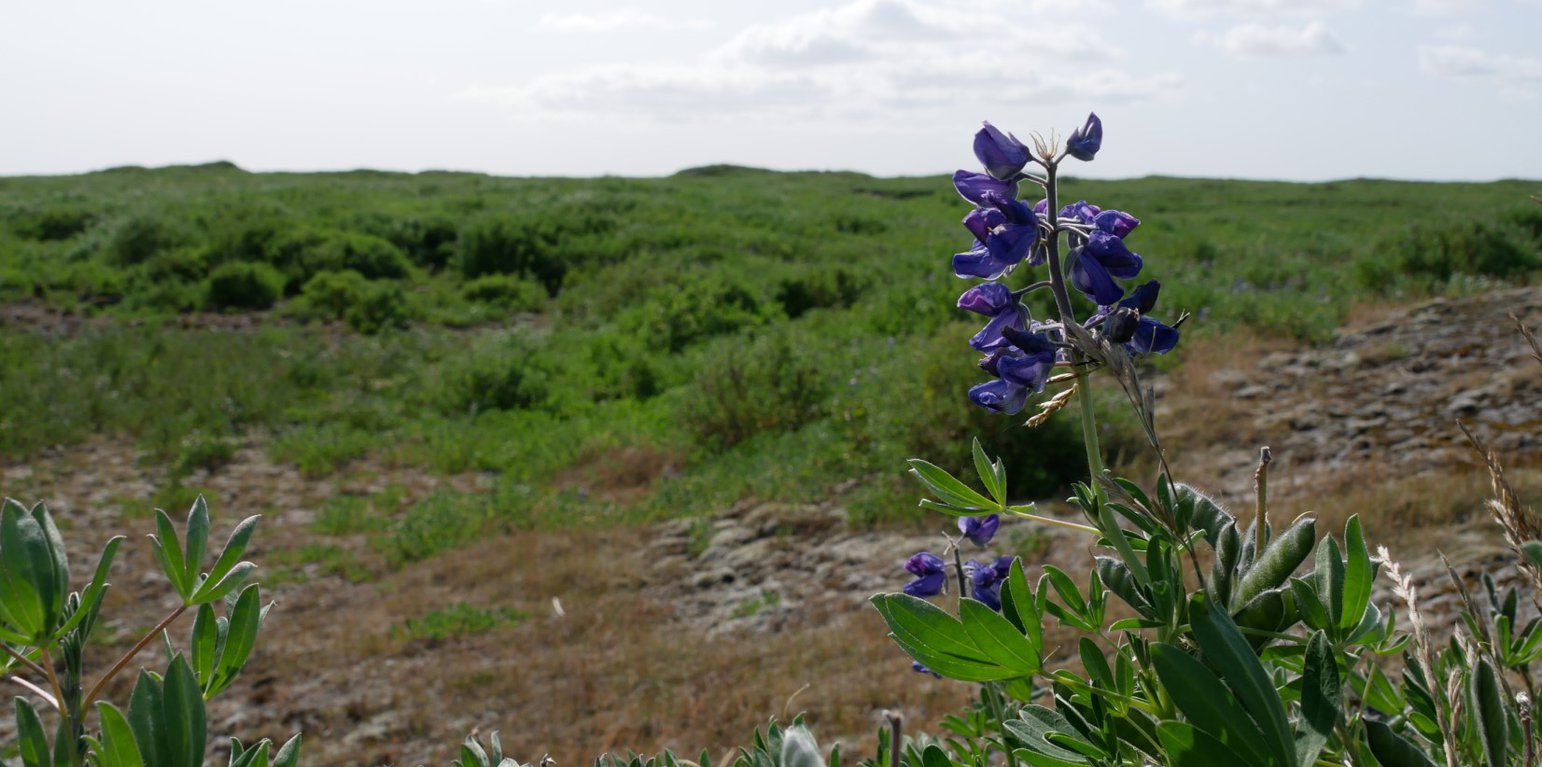



The nootka lupine (Lupinus nootkatensis) is a legume that can survive in the harsh climate of Iceland. It was introduced from Alaska to increase soil cover and fertilize the sandy and gravelly soil. For that purpose, it has been widely used from 1990 onwards in degraded areas all over Iceland. Because of its large amount of seed production, the plant is able to reproduce rapidly and spread. The ability of the lupine to fix nitrogen through its root system reduces the need for fertilizer - especially when planting trees. Increased vegetation cover due to the lupine plants minimizes vulnerability to wind erosion. The ground is protected and sandstorms can be reduced. This also protects neighbouring fields, and public and private infrastructure from sand and dust storms.
The lupine is seeded with machinery in spring or very late autumn. It is planted in strips – rather than all over the ground - because the plant readily spreads and colonise. Before planting, lupine seed have to be inoculated with rhizobium bacteria. These bacteria help the plant to fix nitrogen: without this inoculation the plant wouldn’t survive in the bare soil. These bacteria are produced during winter time in a laboratory. The lupine needs no fertilizer after planting. Planting of lupine is an extremely cost-efficient and effective way of increasing soil cover and soil fertility. It is a one-off operation: no further action needs to be carried out afterwards.
However, the nootka lupin is very controversial in Iceland despite its apparent advantages both on and offsite. The use of lupines should be carefully considered, especially in sensitive and protected areas. The reason is that this non-native plant is very invasive and leads to the displacement of the native vegetation. Grazing does not stop lupines spreading: only young plants are eaten by sheep, but once mature, its bitterness renders it unpalatable. On a small-scale, it is possible - with great effort - to slow down the spread by cutting the flowers. On a large-scale, the spread can only be stopped with herbicides which is highly controversial. From the land user’s view, the planting of lupine reduces the aesthetic value of the landscape because of monoculture: diversity is lost. That is why people try to plant trees in such fields. Because of the controversy surrounding the plant, the technology has been little adopted by farmers and due to its invasiveness, the Soil Conservation Service stopped using the lupine in 2018.
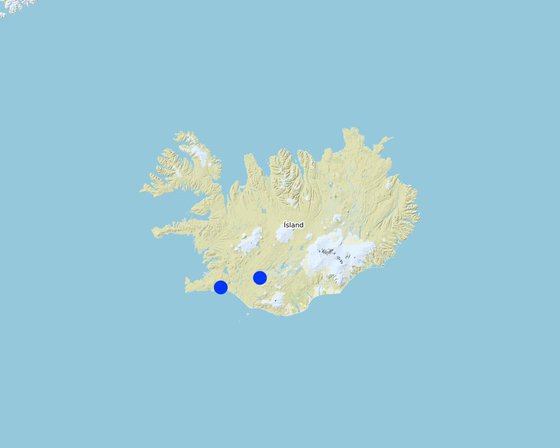
الموقع: Thorlákshöfn, Hekla area, South of Iceland, أيسلندا
عدد مواقع تنفيذ التقنيةالتي تم تحليلها: 2- 10 مواقع
انتشار التقنية: منتشرة بالتساوي على مساحة (approx. 100-10 كم2)
في منطقة محمية بشكل دائم؟: كلا
تاريخ التنفيذ: منذ 10-50 سنة
نوع التقديم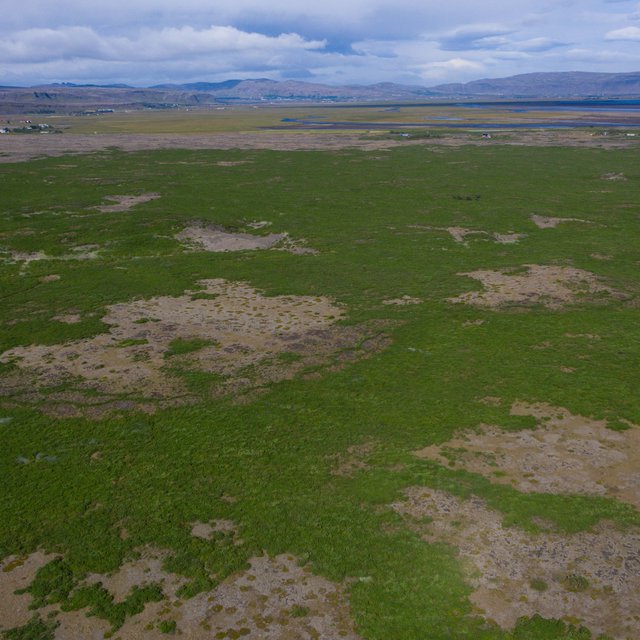

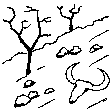


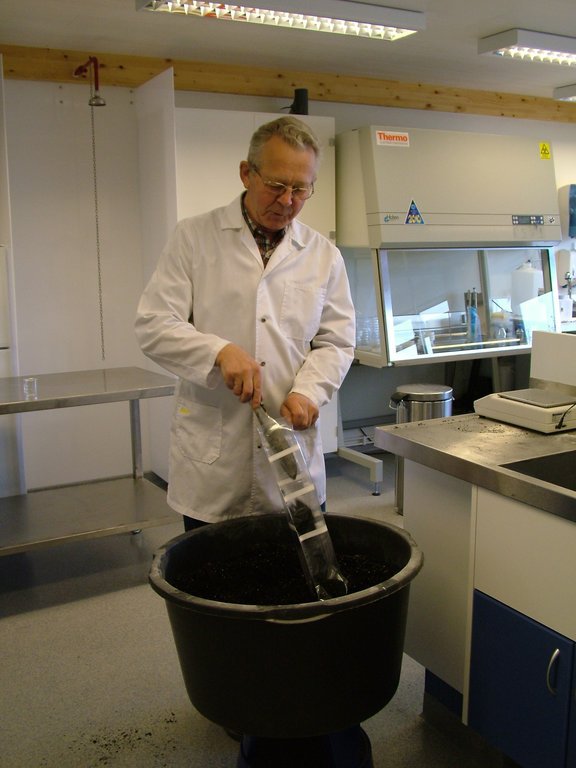
| تحديد المدخلات | الوحدة | الكمية | التكاليف لكل وحدة (ISK) | إجمالي التكاليف لكل مدخل (ISK) | % من التكاليف التي يتحملها مستخدمو الأراضي |
| غير ذلك | |||||
| Seeding lupine (total costs) | ha | 1,0 | 30000,0 | 30000,0 | |
| إجمالي تكاليف إنشاء التقنية | 30'000.0 | ||||
| إجمالي تكاليف إنشاء التقنية بالدولار الأمريكي | 217.39 | ||||
Less dust in the air during windstorms due to increased ground cover and therefore fewer health consequences.
Due to its invasiveness and its enormously dense growth, other native plants are displaced by the lupine.
Due to its invasiveness and its enormously dense growth, other native plants are displaced by the lupine.